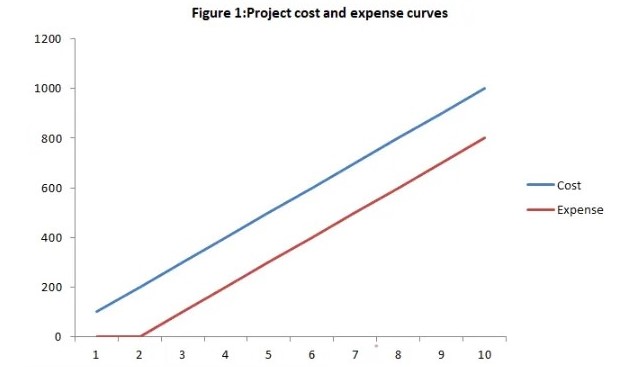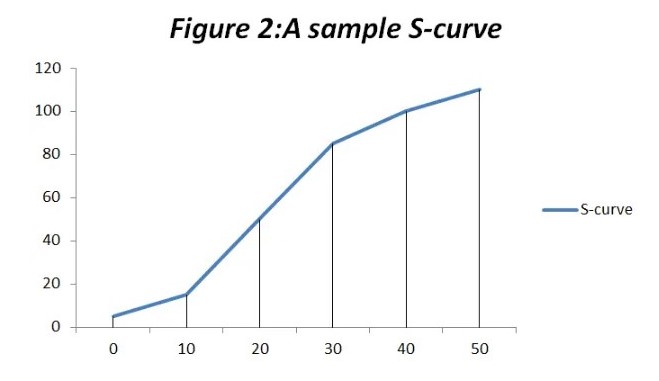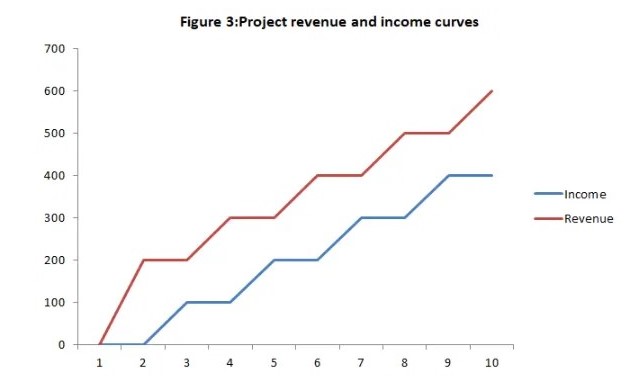
The S Curve
S-Curve is a line that shows the cumulative expenditure of a project’s direct and indirect cost per time. As you can see in the below figure, this line gets the S shape. Most of the time, the owners ask the contractor to present such S-Curve for the lifetime of the project.

The steps to develop a S-Curve
- construct a simple bar chart for all tasks of the relevant project.
- Use the task duration and assign the costs to each task.
- Plot the cumulative amounts of the expenditure against the time by connecting the amounts of expenditures over the time.
Project Income (Cash In)
The form of the progress payments is the flow of money from the owner to the relevant contractor. The contractor makes the estimates of the completed work periodically. Then, an owner’s representative verifies it. The percentage of the total contract completion or the actual field measurement of the placed quantities are the evaluations that work as bases to estimate them. Usually, the owner retains 10% from all validated progress payment that was submitted by the contractor. Moreover, the contractor receives all the accumulated retainage payments with the last payment.

Calculating the Construction Cash Flow
How do we get the construction cash flow? We can take by plotting the contract expense and the income curves. The difference between those points of the curves becomes the cash flow. According to the below figure, the hatched area is the difference between expense and the income curves.


If we consider the figure 4, the contractor may ask for an advance or mobilisation. It causes a shift in the income profile. As a result of that, as shown in figure 5, there won’t occur an overdraft. If there are a low number of payments, it will create an increase in the overdraft. (as shown in figure 6) So, it is better to consider the factors that create an impact on project finance.

The steps of calculating the cash flow includes:
- Perform project schedule and decide the project and activities timing
- Take the early or late timing as the base and draw the bar chart
- Calculate the cost per time period and the cumulative cost
- Consider the method of paying the cost to produce the expense and adjust it
- To determine the income, take the retention and delay of the owner payment as the base to adjust the revenue
- Calculate the cash flow at the contract different times. (cash flow= income- expense)
Source: https://quantitysurveyor.blog/2020/02/25/project-cash-flow-construction-cost-management/
Looking for the next opportunity in the construction sector ? Visit our website today or give us a call at 017071012





